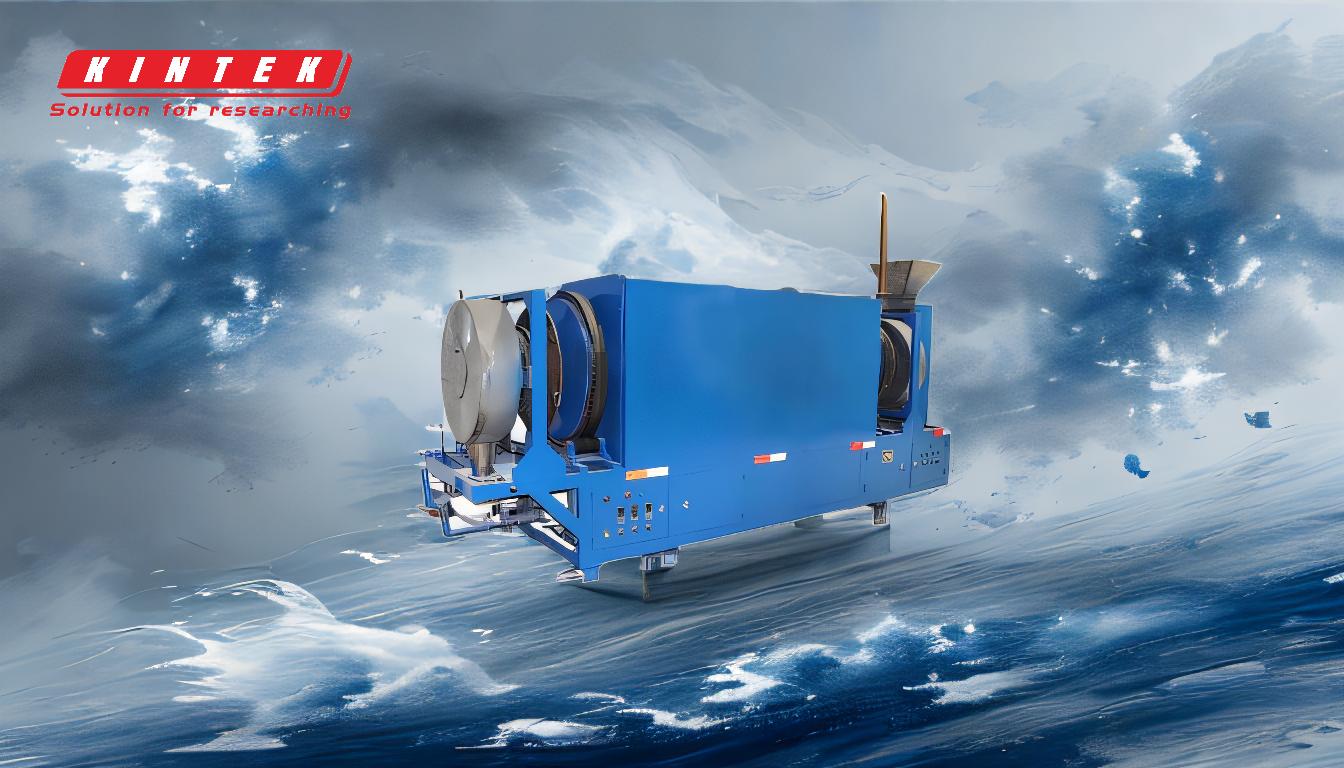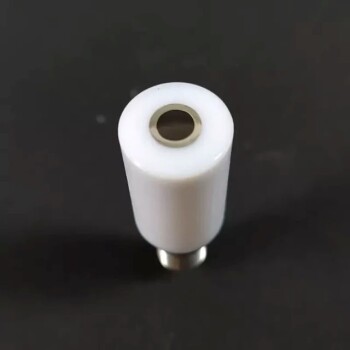From a global waste problem to a valuable resource, tyre pyrolysis offers a powerful solution for managing end-of-life tyres. This thermochemical process breaks down scrap tyres in an oxygen-free environment, converting them into valuable commodities like pyrolysis oil, recovered carbon black, and steel. It simultaneously provides an alternative to landfilling and creates new sources of energy and raw materials.
Tyre pyrolysis is not merely a waste disposal method; it is a key technology for the circular economy. Its core benefit lies in its ability to transform an environmental liability—scrap tyres—into multiple economic assets, effectively closing the loop on material and energy usage.
The Core Benefit: Transforming Waste into Value
The fundamental advantage of tyre pyrolysis is its power to deconstruct a complex waste product and recover its constituent components in a usable form. This process creates distinct, marketable product streams from what would otherwise be destined for a landfill.
Recovering Valuable Commodities
A single tyre pyrolysis process yields three primary outputs. Pyrolysis Oil, often called Tyre Pyrolisis Oil (TPO), is a synthetic fuel similar to industrial furnace oil and can be used for heating or refined further into diesel.
Recovered Carbon Black (rCB) is a solid residue that can be used as a pigment, reinforcing agent in rubber and plastic products, or as a solid fuel. This directly reduces the need for virgin carbon black, an energy-intensive material to produce.
Finally, the steel wire embedded within the tyres is recovered cleanly and can be sold directly to steel mills for recycling, completing the material recovery cycle.
Creating an Alternative Energy Source
The TPO produced is a significant energy product. It serves as a direct substitute for conventional fossil fuels in industrial applications like boilers, furnaces, and power generation.
Furthermore, the pyrolysis process itself generates a non-condensable syngas. Modern plants capture and reuse this gas to power the pyrolysis reactor, making the process highly energy-efficient and, in some cases, self-sustaining.
Environmental and Operational Advantages
Beyond the economic value of its outputs, tyre pyrolysis presents significant environmental and operational benefits over traditional disposal methods.
Drastic Landfill and Pollution Reduction
End-of-life tyres are a major environmental burden. They take up vast landfill space, are non-biodegradable, and can become fire hazards or breeding grounds for pests.
Pyrolysis offers a definitive end-of-life solution, diverting nearly 100% of the tyre's mass from landfills and preventing the associated long-term environmental risks.
Lowering Greenhouse Gas Emissions
This technology helps reduce greenhouse gas emissions on two fronts. First, it avoids the slow release of methane that can occur as tyres break down in landfills.
Second, by creating recovered materials like rCB and steel, it offsets the significant carbon footprint associated with producing these materials from virgin resources.
Process Flexibility and Simplicity
Pyrolysis reactors are relatively simple and have matured to a commercial scale. The process can be adapted to various feedstocks, though it is optimized for tyres.
This operational simplicity allows for the development of facilities at different scales, from large central plants to smaller, more localized operations that can be placed closer to the source of the tyre waste, reducing transportation costs and logistics.
Understanding the Trade-offs and Challenges
While the benefits are clear, a trusted assessment requires acknowledging the practical challenges. Success depends on navigating technical and economic hurdles.
Output Quality and Post-Processing
The quality and consistency of pyrolysis oil and rCB can vary based on the feedstock and process conditions. The oil often contains impurities and may require refining or upgrading to meet specific market or engine standards.
Similarly, rCB must often be processed and refined to achieve the particle size and purity required for high-value applications, competing with virgin carbon black.
Economic Viability and Market Fluctuation
The profitability of a tyre pyrolysis plant is highly dependent on external market forces. It is sensitive to the cost of acquiring and shredding tyres, local energy prices, and the fluctuating market value of its three outputs: oil, carbon black, and steel.
A thorough economic analysis of local and regional markets is critical before any investment.
Regulatory and Permitting Hurdles
Operating a pyrolysis plant involves handling chemicals and managing emissions. This requires navigating a complex landscape of environmental regulations and obtaining the necessary permits, which can be a time-consuming and resource-intensive process.
Making the Right Choice for Your Goal
Tyre pyrolysis is a multifaceted solution, and its attractiveness depends on your primary objective.
- If your primary focus is environmental impact reduction: This is one of the most effective technologies for eliminating tyre waste from landfills and reducing the carbon footprint associated with virgin material production.
- If your primary focus is creating a new revenue stream: Success hinges on securing a low-cost tyre supply and validating the local market demand and price for pyrolysis oil, rCB, and scrap steel.
- If your primary focus is energy independence: Pyrolysis provides a reliable method for converting a consistent local waste stream into a usable fuel oil, reducing reliance on external fossil fuel markets.
Ultimately, tyre pyrolysis provides a clear and proven pathway to turn a persistent environmental problem into a sustainable economic opportunity.
Summary Table:
| Benefit Category | Key Outcomes |
|---|---|
| Value Recovery | Produces pyrolysis oil, recovered carbon black (rCB), and scrap steel. |
| Environmental Impact | Diverts tyres from landfills, reduces greenhouse gas emissions, and supports a circular economy. |
| Operational Advantages | Process flexibility, energy self-sufficiency via syngas, and potential for localised operations. |
| Economic Potential | Creates new revenue streams from waste and reduces reliance on virgin materials and fossil fuels. |
Ready to turn tyre waste into a sustainable profit center for your operation?
KINTEK specializes in providing robust laboratory equipment and consumables to support the research, development, and quality control of pyrolysis processes. Whether you are testing feedstock, analyzing product yields, or optimizing your operation, our solutions help you ensure efficiency and maximize the value of your outputs.
Contact our experts today to discuss how KINTEK can support your tyre pyrolysis project and help you achieve your sustainability and profitability goals.
Related Products
- Electric Rotary Kiln Pyrolysis Furnace Plant Machine Calciner Small Rotary Kiln Rotating Furnace
- Electric Rotary Kiln Small Rotary Furnace Biomass Pyrolysis Plant
- Electric Rotary Kiln Continuous Working Small Rotary Furnace Heating Pyrolysis Plant
- Rubber Vulcanizer Vulcanizing Machine Plate Vulcanizing Press for Lab
- Lab Internal Rubber Mixer Rubber Kneader Machine for Mixing and Kneading
People Also Ask
- How does a rotary kiln rotate? Discover the Core Mechanics That Drive Thermal Processing
- What are the types of pyrolysis reactors used in industry? Choose the Right Technology for Your Product
- What are the outputs of tyre pyrolysis? Turn Waste Tires into Valuable Resources
- What are the different types of pyrolysis equipment? Choose the Right Reactor for Your Process
- What are the zones in rotary kiln in cement production? Master the Core Process for High-Quality Clinker




















